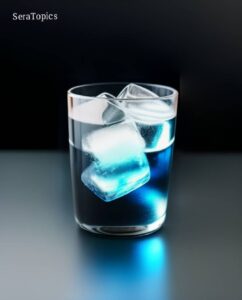The Ice Hack for Weight Loss: A Trend Worth Chilling Out About?
The world of weight loss is constantly buzzing with new trends, and the Ice Hack is the latest to capture attention. This approach centers around using cold exposure to boost metabolism and burn fat. But does science support the hype? Let’s delve into the icy details of the Ice Hack and explore its potential for weight loss.
What is the Ice Hack?
The Ice Hack encompasses various methods that expose your body to cold temperatures, including:
- Ice baths
- Cold showers
- Cryotherapy
- Consuming ice water
- Applying ice packs
Proponents believe cold exposure activates brown fat, a type of fat that burns calories to generate heat. They also suggest it increases metabolic rate and improves insulin sensitivity, both factors influencing weight management.
Science Behind the Chill: Does the Ice Hack Work?
The science surrounding the Ice Hack for weight loss is still in its early stages. While some studies show promise, more research is needed to draw definitive conclusions. Here’s a glimpse into what we know so far:
- Calorie Burning: Cold exposure can trigger a thermogenic response, causing your body to burn slightly more calories to maintain core temperature. However, the increase is likely minimal and may not translate to significant weight loss.
- Brown Fat Activation: Studies suggest cold exposure may activate brown fat, but the long-term impact on weight management remains unclear.
- Insulin Sensitivity: Some research suggests cold exposure might improve insulin sensitivity, potentially aiding weight control.
Important Considerations Before Trying the Ice Hack
While the Ice Hack might sound appealing, there are crucial factors to consider:
- Limited Evidence: Extensive studies are needed to confirm the Ice Hack’s effectiveness and safety for long-term weight loss.
- Individual Variability: Responses to cold exposure can vary depending on age, health, and body composition.
- Health Conditions: Consult your doctor before trying the Ice Hack if you have pre-existing health conditions, especially cardiovascular issues or Raynaud’s disease.
- Modest Effects: Even if the Ice Hack works, the weight loss impact is likely to be modest. It’s best used as a complementary approach, not a sole strategy.
- Potential Risks: Excessive ice water intake can lead to electrolyte imbalances, and improper use of ice packs can cause skin irritation or frostbite.
Sustainable Weight Loss Strategies: Beyond the Ice Hack
For lasting weight loss results, focus on building healthy habits:
- Balanced Diet: Prioritize fruits, vegetables, whole grains, and lean protein while limiting processed foods and sugary drinks.
- Regular Exercise: Aim for at least 30 minutes of moderate-intensity exercise most days of the week.
- Gradual Changes: Make small, sustainable modifications to your daily routine for better long-term adherence.
- Professional Guidance: Consult a doctor or registered dietitian for personalized advice tailored to your needs.
Conclusion: The Ice Hack and Your Weight Loss Journey
The Ice Hack presents an intriguing concept, but more research is needed to solidify its place in weight loss strategies. Remember, sustainable weight loss hinges on healthy habits and gradual progress, not quick fixes. Focus on building a balanced lifestyle that supports your long-term goals.
So, ditch the ice obsession and embrace a holistic approach to wellness. Your body (and your weight loss journey) will thank you!
*** Remember, before embarking on any weight loss journey, it’s advisable to consult with a healthcare professional to ensure the chosen strategies align with your individual health needs and goals.
References:
- van der Lans, A. A., Hoeks, J., Brans, B., Vijgen, G. H., Visser, M. G., Vosselman, M. J., … & Schrauwen, P. (2013). Cold acclimation recruits human brown fat and increases nonshivering thermogenesis. The Journal of Clinical Investigation, 123(8), 3395–3403.
- Lee, P., Smith, S., Linderman, J., Courville, A. B., Brychta, R. J., Dieckmann, W., … & Celi, F. S. (2014). Temperature-acclimated brown adipose tissue modulates insulin sensitivity in humans. Diabetes, 63(11), 3686–3698.




